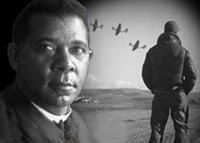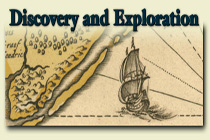Jewish Holy Days
Martha Katz-Hyman discusses the arrival of Jews in early colonial America, their reception in the colonies, and the ways in which they observed their religion and its celebrations.
Martha Katz-Hyman discusses the arrival of Jews in early colonial America, their reception in the colonies, and the ways in which they observed their religion and its celebrations.
Colonial Williamsburg historian Lou Powers discusses the holiday season as it existed in the colonial era, as well as touching on calendar systems and class divisions.
Kelly Ladd-Kostro, associate curator of archaeological collections at Colonial Williamsburg, describes the search for remnants of 17th-century Middle Plantation, the settlement which preceded Williamsburg.
Colonial Williamsburg master bookbinder Bruce Plumley describes hand bookbinding and discusses the value of books during the colonial era, including the value of Thomas Jefferson's personal library.
Historian Cathy Hellier explains the differences between modern American English and the English of the colonists during the 1700s; she looks also at new ideas on the dialect of African Americans in the Williamsburg area at the time. Click here to learn more about 18th century speech.
Historian Nancy Milton describes the English influences on the U.S. Constitution, including documents reaching as far back as the Magna Carta.
Seminole Canyon State Park includes Fate Bell Shelter, that, according to the park's website, "contains some of North America's oldest Indian pictographs and is one of the oldest cave dwellings in North America."
The site offers tours.

Historical aspects of many of the 384 areas under the National Park Service's stewardship are presented in this expansive site. A "Links to the Past" section contains more than 25 text and picture presentations on such diverse history-related topics as archeology, architecture, cultural groups and landscapes, historic buildings, and military history. Of particular interest to teachers, a section entitled "Teaching with Historic Places" features more than 60 lesson plans designed "to enliven the teaching of history, social studies, geography, civics, and other subjects" by incorporating National Register of Historic Places into educational explorations of historic subjects. Examples include an early rice plantation in South Carolina; the lives of turn-of-the-century immigrant cigar makers near Tampa, Florida; a contrast between the Indianapolis headquarters of African-American businesswoman Madam C. J. Walker and a small store in Kemmerer, Wyoming, that grew into the J. C. Penney Company, the first nationwide department store chain; the Civil War Andersonville prisoner of war camp; President John F. Kennedy's birthplace; the Liberty Bell; Finnish log cabins in Iowa; and the Massachusetts Bay Colony's Saugus Iron Works. Especially useful for teachers interested in connecting the study of history with historic sites.

A collection of maps dealing with the age of European discovery (1400-1800), this collection is searchable by word, subject, and geographical region. Maps are presented in several formats; high resolution images are available.